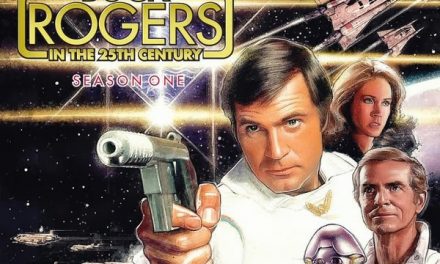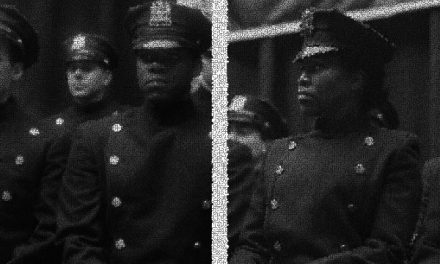As a participant of the conference Redefining Televisuality: Programmes, Practices, Methods at the Film University Babelsberg I attended the panel on ‘Television Ontology’. All the seats in the room were taken. Every presenter only had 15 minutes, so at the end it felt like we had all completed a marathon sprinting. But let me present to you the information that I found most interesting along the way.
The first talk with the title ‘Interactive Televisuality. Videographic Styles and Performances of Streaming Platforms in CrossMedia Environments’ was presented by Kathrin Fahlenbrach from University of Hamburg. There is a paradigmatic shift happening in the television culture because of digital streaming platforms. Recommendation algorithms have reinforced personalised programming. The presentational styles are being shaped by the viewing habits of the subscribers, which create televisual user interfaces as new places of TV. Netflix itself speaks of a ‘sensitive interface design’, for which the interactive thumbnails, that are customised for each user, are a good example.
The social media channels of streaming platforms are now the peripheries of TV and follow an algorithmic process. Short video snippets are being posted on Instagram or TikTok, which were selected by AI. Fahlenbrach asked to which extent the presentational style of streaming platforms today is interwoven with their socio-aesthetic performance in social media. Their users can get behind the scene glimpses and fan questions are being answered. This content creates a new ‘liveness’ for the new televisual products. The user generated content around these products is feeding these televisual products with a human vividness, which is lacking on their original platforms. An example of this is the memevication of videos (for example ‘Wednesday’, which was ideal because it went viral). ‘Much more than in the previous change of TV, technology shapes the styles of televisuality and its perception by viewers.’ She concluded with a quote by Caldwell: ‘With increasing frequency, style itself became the subject, the signified, if you will, of television.’
In his presentation on ‘Cheap TV’, Brett Mills from Edge Hill University challenged the conventional notion that high production costs equate to high value in television. He argued that simply investing money in a project doesn’t guarantee its quality. Mills used the example of Richard Osman’s House of Games (2017-present), a daily UK broadcast, to illustrate his point.
He explored the multifaceted nature of ‘cheap’, considering it as an indicator of production costs, a descriptor for specific aesthetics and genres, and a critique of certain television perceived as of lower quality.
Mills contended that Cheap TV is not only inexpensive in production but also perceived as such. A ‘cheap-looking set’ becomes an aesthetic statement, embracing its own affordability. He noted that some quiz shows intentionally acknowledge their cheap aesthetics, finding pleasure in their simplicity. This acceptance of cheapness, he argued, eliminates hierarchies between viewers and the text, fostering inclusivity and democracy in television.
Mills raised the question of whether negative perceptions of cheap television stem from its appearance or viewers’ preconceived biases. He advocated for reclaiming the term ‘cheap TV,’ asserting that many television programmes fall under this category. In doing so, he challenged preconceptions and emphasised the importance of appreciating the diverse and democratic nature of television content.
In her presentation on ‘How to approach cinematic television in the era of convergence (and deconvergence),’ Klára Feikusová from Palacký University addressed the blurred boundaries between television and cinema. Despite the ongoing use of the term ‘cinematic television,’ she questioned its relevance in an era where media convergence challenges traditional distinctions. Feikusová emphasised the need to study the intersection of cinema and TV, advocating for an examination of how different media intersect and in what ways.
To delve into this convergence, Feikusová proposed analytical tools, focusing on ‘concretisation’ (identifying cinematic elements in a program) and ‘negotiation’ (attempting to preserve television’s unique qualities). The negotiation model involved encoding, decoding (analysing the final product, reviews, and cultural context), and contextualisation. By applying these tools, one can determine whether a programme is cinematic, televisual, or a blend of both, shedding light on the evolving landscape of media convergence.
The last talk ‘The Traitors: the case for a new reality TV?’ was presented by Rodrigo Pereira from the Universidade Nova de Lisboa. In his presentation, Pereira provided a comprehensive overview of the evolution of reality TV across different waves. The first wave, occurring in the late 80s to early 90s, was characterised by the camcorder era. This was followed by the second wave in the mid-90s to late 90s, known as the docu-soap era. The early 2000s marked the third wave, focusing on social experiments. In the current landscape, reality TV operates within a labour regime defined by the brand world, with physical production outsourced and regionalised. The labour protocol involves licensing, and the aesthetic goal emphasises flexible reformatting. The production process centres on concept iteration, reflecting the dynamic and ever-changing nature of reality television.
One example for the 4th wave, that we are currently on, is the reality TV show The Traitors (2022-present).
It is based on the mystery game Mafia invented by Dimitry Davidoff in 1986 and first premiered in 2021 as a Dutch production by Endemol, the same company responsible for shows like Big Brother. In the beginning the players are being classified as traitors or faithfuls by the narrator. The minority of traitors needs to make it till the end without being unmasked or voted off. Just like in a Greek tragedy, everyone gets upset when the traitor wins.
Aided by its early viral success in the Netherlands the franchise has been aired in 17 western countries and territories. The original was localised to the regional market of each country for example by using local celebrities. However, Pereira emphasises that the participants are no actors because they represent themselves. The show got very good critiques and streaming ratings were better than the cable ones, presumably because more young people were watching the show. Pereira compares the plot of the show to democratic practices, such as voting. Whereas democratic voting has a culture of anonymity, voting ‘in’ and prediction, voting in reality TV has a culture of disclosure, voting ‘off’ and explanation.
In essence, these presentations collectively underscored the transformative role of technology and the diversification of content. They showcased television’s ability to adapt, engage and resonate with viewers in an ever-changing digital landscape, marking a significant evolution in the medium’s ontology. The value of various TV programmes has been redefined, the word ‘cheap’ has been reclaimed and the connections between reality TV and democracy have been analysed. In conclusion, this panel not only expanded my understanding of television studies but also sparked my curiosity to explore further the intricate connections between technology, content, and audience engagement in the ever-evolving realm of television.
Malin Binding was born in Lübeck on 2nd January 1998 and raised on a small island in the Baltic Sea called Fehmarn. She is currently enrolled in the MA Media Studies at the Film University in Babelsberg. She completed her bachelor’s degree in European Media Studies from the University of Potsdam. She has gained practical experience through various internships in the field of media production, including IFAGE Film Production Company in Wiesbaden and Network Movie Film Production Company in Hamburg, and working for two years in the rbb television News Agency in Berlin.





